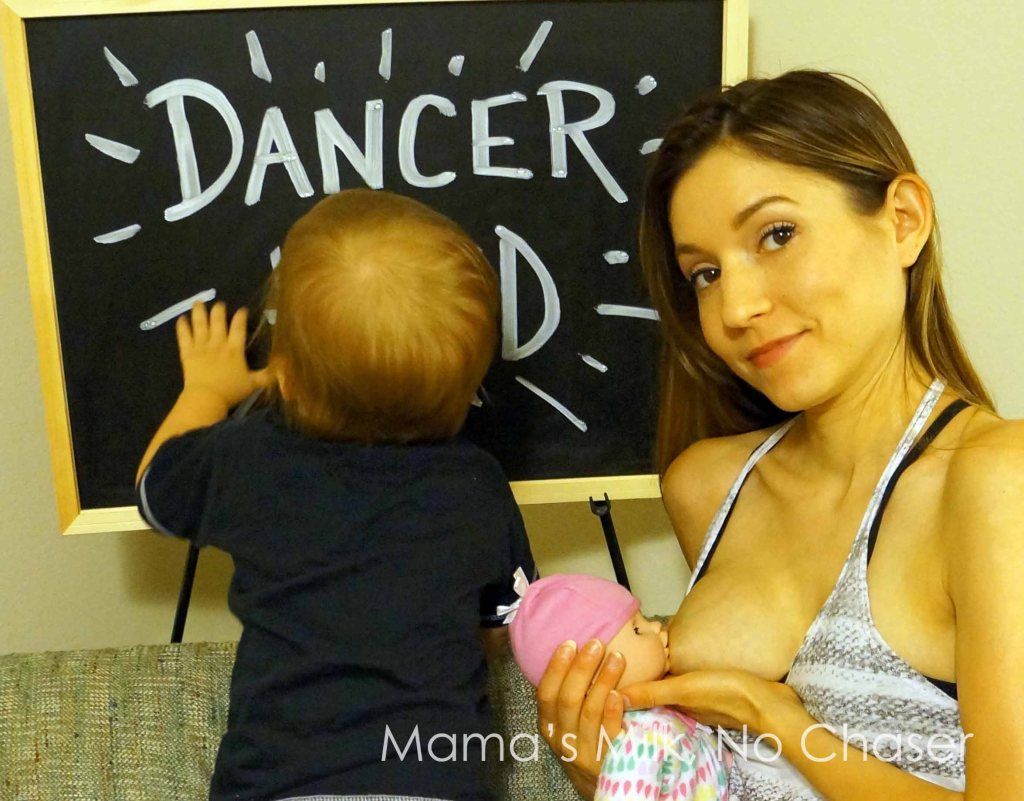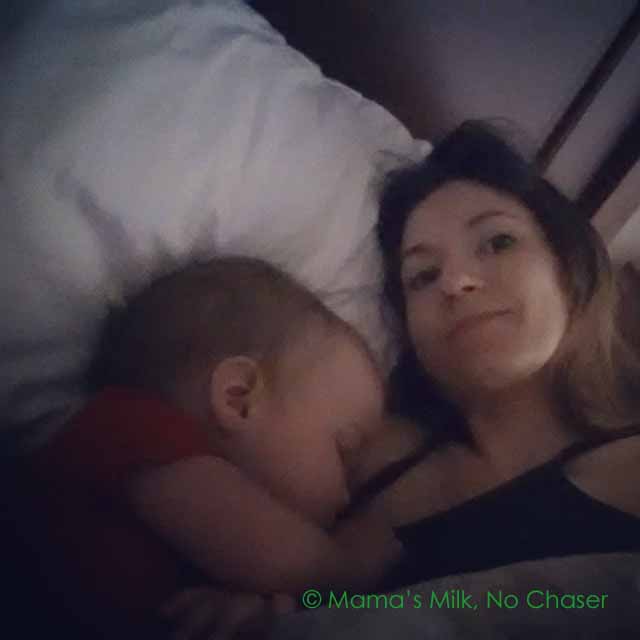
So, it turns out you can’t just install your baby onto your chest (like a car seat, top-end up and rear-facing), then just kinda expect feeding to happen. Nope, you are the car seat! Which means you’ll have to figure out how to buckle your baby around the boob using the rest of your body.
If you’re new to holding babies, don’t stress if you thought you’d instinctively know how to hold yours while nursing. Sometimes, a change in positioning is all it takes to make breastfeeding snafus less snafu-y. Most likely, you and your baby will find a favorite position that works best with each age and stage.
The point is to get your baby fed, to give your baby comfort, and to feel at ease yourself. No need to make things complicated.
So I’ve got something for you visual learners — some classic breastfeeding positions, as well as which babies and situations can benefit most from each.
Oh, and because I have a toddler who is incapable of certain positions due to his size and, um, energy level, I borrowed the most compliant members of my mother’s baby doll collection. Yes, this is a photo montage of me pretending to breastfeed dolls. (All in the name of education!)
Though to my credit, I do believe it was the highlight of their existences.
CRADLE HOLD
This is the popular Mother Mary pose you see in Renaissance art the world over. For most women, this one comes instinctively and doesn’t need to be taught. So, pretend you’re Mother Mary herself (you’re a step ahead if your name is Mary) and lay your sweet babe into the manger of your arms. Now where the heck can I get Three Wise Men? Will they do my dishes, too?
WORKS WELL FOR:
Babies who can sit up and have head control
Nursing in public (allows for discreet nursing whether you use a cover or not)
WHAT IT LOOKS LIKE:
She’s “nursing” on the right breast, so her head is cradled in the crook of my right arm.

The rest of her body is across my belly, her back supported mostly by my right forearm. A pillow can rest underneath her in my lap when my arms get tired… like, three minutes ago…


And this is why I opted to use the dolls…

REVERSE/CROSS CRADLE HOLD
This is the pose for when you want to look like you’ve got a job to do. As the name implies, it does require opposite arm-work as the traditional cradle hold. However, here you get one arm free to do breast compressions, get control over your “breast sandwich,” or direct the angle of an itty-bitty floppy baby head. A lot of multi-tasking can happen with this hold because hey, mama’s a hard worker.
WORKS WELL FOR:
Inverted nipples
Large breasts
Newborns
Preemies/small babies
WHAT IT LOOKS LIKE:
Baby’s head is on my right breast, supported by my left hand, with back against my left forearm. You can figure out what to do with the rest of the body depending on your anatomy. 
Ah! A pillow! Sweet lack-of-bicep relief. Use the free arm (right, in this case) to manipulate your breast for the baby. Squeeze the milk, flip out an inverted nipple, support a heavy breast, whatever is your golden ticket to a good meal for your baby. 
Because, black & white.

CLUTCH/FOOTBALL HOLD
You are better than the cheerleader, better than the goalie, the linebacker, even the quarterback. To your baby, you’re the whole damn playing field — you are mama! Show off your team spirit with this position. Scoop up your little football-sized babe under your arm like, well, a football. Luckily, you have two arms so that means this position gets an all-around 10.0 for multiple babies.
WORKS WELL FOR:
Babies with a challenged/detaching latch
Large breasts
Multiples
Preemies/small babies
Cesarean recovery
WHAT IT LOOKS LIKE:
Be sure to flex your arms so you look extra buff and strong, because that just helps with a lot of stuff.

Great Halloween idea for babies nursing as such: Don a French beret, and slide baby into an oversize baguette wrapper. Ask everyone you see if they have a bicycle basket for the bun that you made in your oven. 
“Oh look! It’s the Clutch/Football hold!” See, someone gets it. 
Have someone help keep the baby alert… (Thanks, MaiTai. Mister Big Helper!) 
HUG ALL THE BABIES!
DANCER HAND
A special needs baby might need a special hand… a dancer hand! This can be very helpful as it lets you support your breast and the baby’s chin and jaw simultaneously, enabling maximum control. Let baby’s chin rest on the web between your thumb and pointer finger (which stabilizes the jaw), and wrap the rest of your fingers under your breast. The other hand supports the baby’s neck and/or shoulders.
WORKS WELL FOR:
Babies with a challenged/detaching latch
Babies with Down syndrome or hypotonia
Babies with a cleft
Large breasts
Multiples
Preemies/small babies
Cesarean recovery
WHAT IT LOOKS LIKE:
File these under: Weirdest Breastfeeding Photos Ever…. ? 

SADDLE HOLD
Giddy up! Or should I say “kiddy up,” now that you’ll have a babe in your lap for lunchtime. For those of you who are worried there might be reins involved with this hold, I can assure you that it requires as only as little or as much holding as you want. Your child sits straddle-style in your lap, facing you to nurse. You can support his back if you’re in a chair to keep from tumbling off, or take advantage of your freed-up arms to eat dinner, write, polish your stirrups, etc.
WORKS WELL FOR:
Babies who can sit up/have head control
Older infant with a cold (staying upright keeps nasal passages clear)
Toddlers/older infants
Nursing in public (for shy mamas, this will look like you’re simply giving a hug)
WHAT IT LOOKS LIKE:


LAID-BACK NURSING
This super-chill nursing style makes all the babies sing, “Rollin’ out my crib, lettin’ you know, I’m sippin’ on milk not juice… Laaaaid-back… with my mind on my mommy, and my mommy on my mind!”
WORKS WELL FOR:
Babies who can sit up/have head control
Tandem nursing
Cesarean recovery
Sleep-nursing
Toddlers/older infants
WHAT IT LOOKS LIKE:


Got my mind on my baby and my baby on my mind…

SIDE-LYING POSITION
This is what I like to call the “Side-Lazing” position, but maybe that’s just me. It’s amazing how a child refuses to lay down for a nap with all the willful rebellion that could possibly fit into a twenty-pound person… until a pair of lactating breasts makes contact with a good side-lying surface, then the child won’t get vertical again until they do.
WORKS WELL FOR:
Cesarean recovery
Sleep-nursing
Indulging in laziness
WHAT IT LOOKS LIKE:



SLING CRADLE HOLD
It’s cradle hold… in a sling. Is your mind blown? Learn from the best: babywearing experts teach us how to breastfeed successfully while using a carrier or sling – The Badass Breastfeeder, Nursing in Public, Babywearing 102, Babywearing International of Southern Maryland.
WORKS WELL FOR:
Nursing on-the-go
Nursing in public
Nursing while cleaning or cooking
WHAT IT LOOKS LIKE:

Via Pinterest
Let’s recap in list form:
Babies who can sit up/have head control – Cradle Hold, Saddle Hold, Laid-Back Nursing
Babywearing – Sling Cradle Hold
Babies with a challenged/detaching latch – Clutch/Football Hold
Babies with cleft lip/cleft palate, Down syndrome, or special needs – Modified Football Hold, Dancer Hand Position
Cesarean recovery – Clutch/Football Hold, Side-Lying, Laid-Back Nursing
Inverted Nipples – Cross-Cradle Hold
Large Breasts – Clutch/Football Hold, Cross-Cradle Hold
Multiples/Tandem – Clutch/Football Hold, Laid-Back Nursing
Newborns – Reversed Cradle Hold, Cross-Cradle Hold
Older infant with a cold – Saddle Hold
Preemies/small babies – Clutch/Football Hold, Reversed Cradle Hold
Sleep-nursing – Side-Lying, Laid-Back Nursing
Toddlers/older infants – Saddle Hold (Acrobatics/Gymnurstics will always prevail!), Laid-Back Nursing

